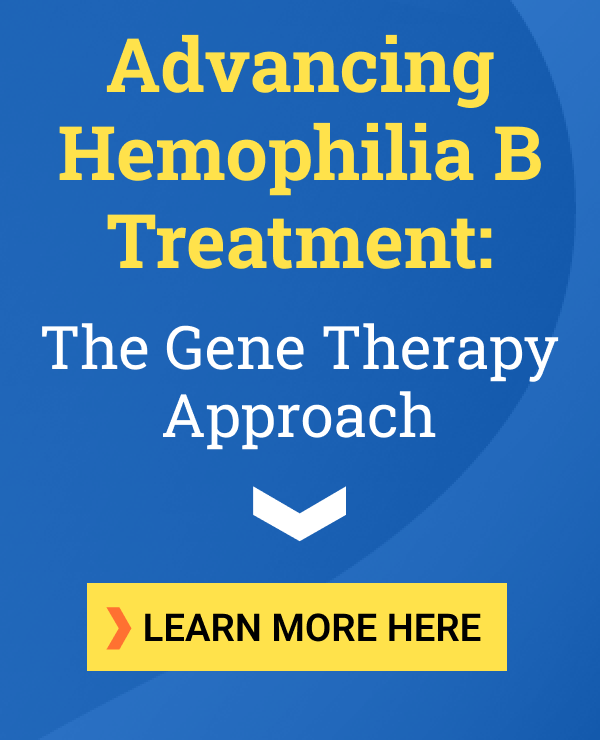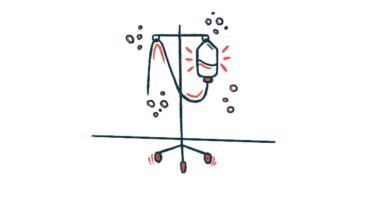Long-term Jivi safe and effective in hemophilia A: Real-world study
Number of patients with no joint bleeds grew during study

Almost three years of treatment with Jivi (damoctocog alfa pegol) reduced the annual bleeding rate among a large, multinational group of previously treated hemophilia A patients, a real-world study reports.
The number of patients without joint bleeds increased during the study and there were no reported treatment-related side effects or discontinuations. Also, the number of infusions per year dropped with Jivi compared with previous factor VIII (FVIII) replacement products.
The study, “Interim analyses of the multinational real-world prospective cohort HEM-POWR study evaluating the effectiveness and safety of damoctocog alfa pegol in patients with hemophilia A,” was published in the European Journal of Haematology.
Hemophilia A is a bleeding disorder marked by the lack or dysfunction of the blood clotting protein FVIII. Regular, lifelong infusions of FVIII replacement therapies that restore the levels of the missing FVIII to prevent or treat bleeds are the mainstay treatment for hemophilia A.
One such therapy, Jivi, delivers a lab-made version of FVIII that’s attached to a harmless molecule called polyethylene glycol (PEG) that improves its stability. With PEG, the therapy remains in the bloodstream longer, allowing for less frequent dosing. Developed by Bayer and administered by an infusion into the vein, or intravenously, Jivi was approved in the U.S. in 2018 for hemophilia A patients, ages 12 and older, who have received previous lines of treatment.
HEM-POWR (NCT03932201) is an ongoing multinational Phase 4 study sponsored by Bayer that was launched to monitor Jivi’s real-world impact over 36 months, or three years. Phase 4 studies, also called post-marketing surveillance studies, are conducted after a therapy has been approved to assess its long-term risks and benefits in real-world settings. In this report, researchers in the U.S., Europe, and Japan presented an interim analysis of data from HEM-POWR gathered up to 33 months.
Results of Jivi’s efficacy, safety analysis
The study enrolled a large, geographically diverse group of people with mild, moderate, and severe hemophilia A. Study outcomes included assessing the annualized bleeding rate (ABR) or the total number of bleeds within a year, the number of affected joints where bleeds occurred, and side effects.
A total of 161 patients were included in the efficacy analysis. From these, 141 (87.6%) had been diagnosed with severe hemophilia A, 15 (9.3%) with moderate disease, and three (1.9%) with mild hemophilia A. Most (82.6%) had been receiving Jivi for a year before entering HEM-POWR. At the start of the study, or its baseline, regular prophylactic treatment was the main treatment regimen (98.1%), with dosing every three to four days (twice weekly) being the most common, followed by every five days.
Most patients maintained their treatment regimen throughout the study. Those who hadn’t received Jivi before the baseline had a worse bleeding history than pretreated patients. Jivi resolved 85% of bleeds after one or two infusions.
Among a subgroup of 49 patients with prior FVIII prophylaxis information, the median number of infusions a year dropped from 156.5 with previous FVIII products to 94.7 with Jivi.
The mean overall ABR in the year before Jivi was 3.3 and fell to 2.4 during the study. Similar reductions were seen for other types of bleeds, including spontaneous bleeds, joint bleeds, and spontaneous joint bleeds.
Among those with severe hemophilia A, the mean ABR dropped from 3.6 in the year before the study to 2.6 during it. The same pattern was observed for patients with non-severe forms of the disease.
The proportion of patients with no affected joints increased between the initial visit and the first follow-up (46.6% vs. 66.7%). These findings were similar for those with non-severe disease (50.0% to 85.7%) and those with severe hemophilia A (46.8% to 65.8%).
Likewise, the proportion of patients with more than two affected joints dropped between the first visit and the first follow-up (23.0% vs. 13.1%). This finding was consistent regardless of hemophilia severity, the researchers said.
The safety analysis included 268 patients who’d received at least one dose of Jivi during the study. Of these, 31 (11.5%) discontinued it due to either being lost to follow-up, withdrawal of consent, or they switched to another therapy.
A total of 58 (21.6%) of these patients reported treatment-emergent side effects, but none led to discontinuing treatment or were related to Jivi. There were no reports of deaths, blood clotting events, or the formation of FVIII inhibitors, or neutralizing antibodies against the therapy.
“These interim analyses provide the first real-world evidence that [Jivi] is an effective treatment with a reassuring safety and tolerability profile in a large, multinational observational study of [previously treated patients] with severe and non-severe hemophilia A,” the researchers wtote. “Findings from this study may be used to inform patients and other stakeholders about real-world prophylaxis dosing regimens and FVIII utilization with [Jivi] in patients with non-severe and severe hemophilia A.”








